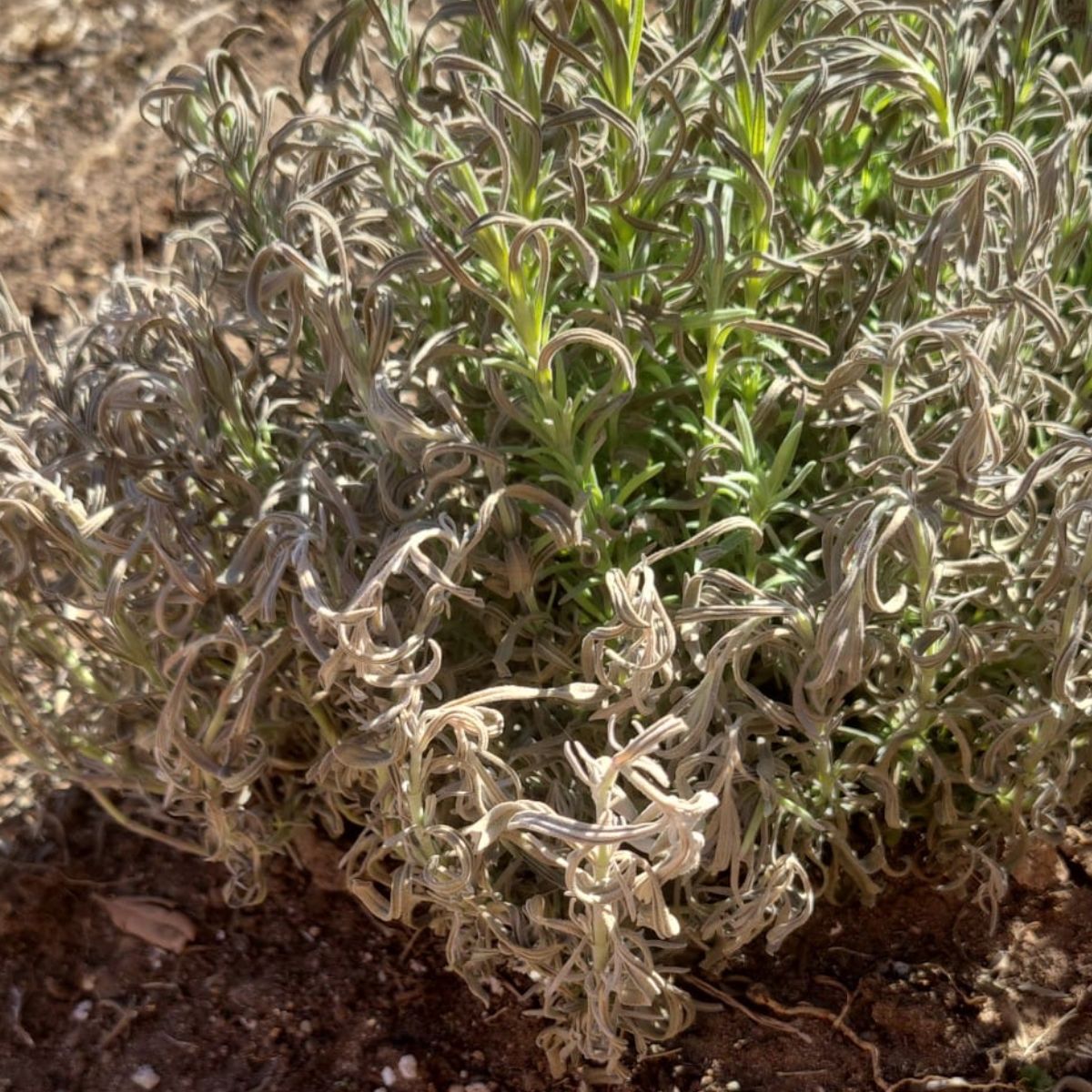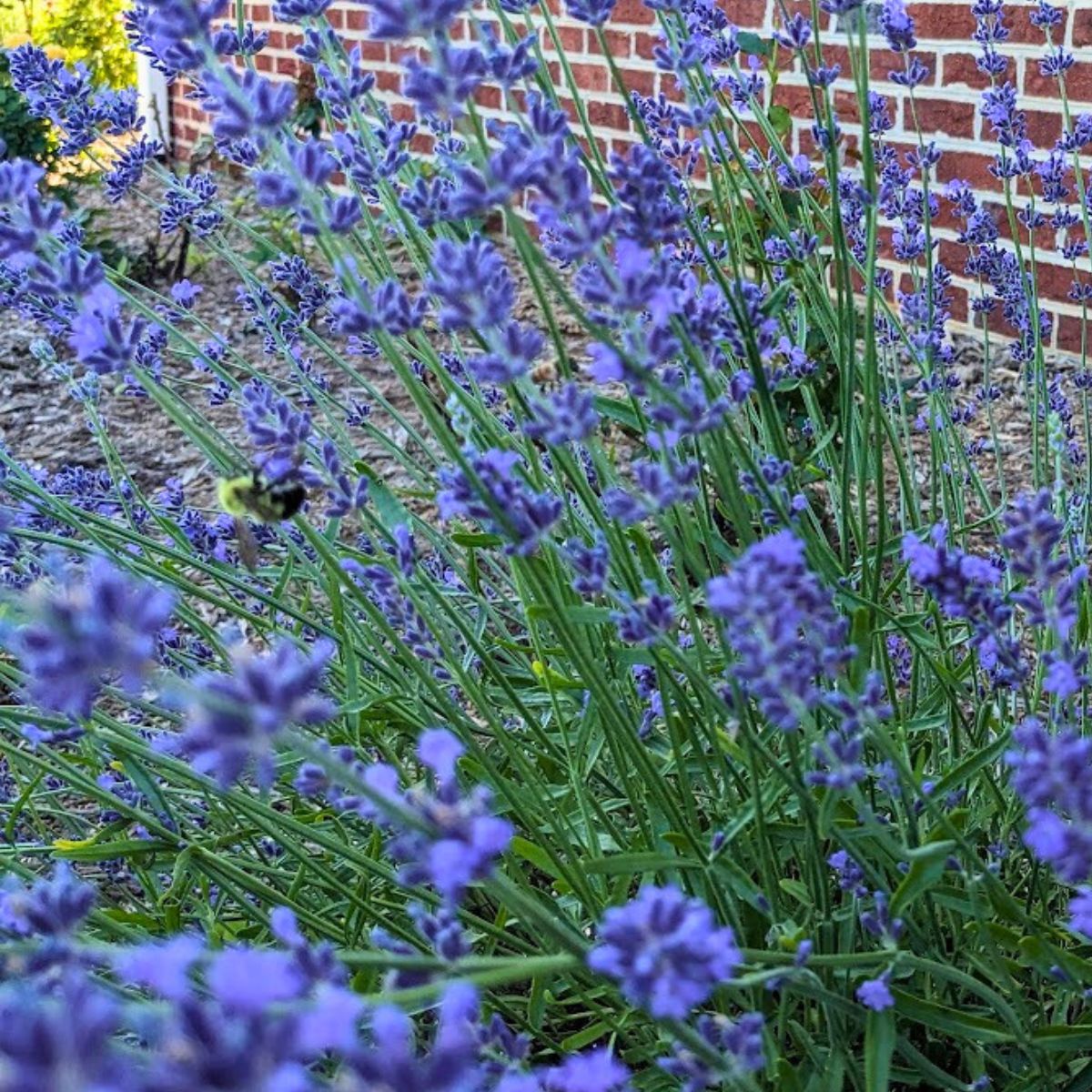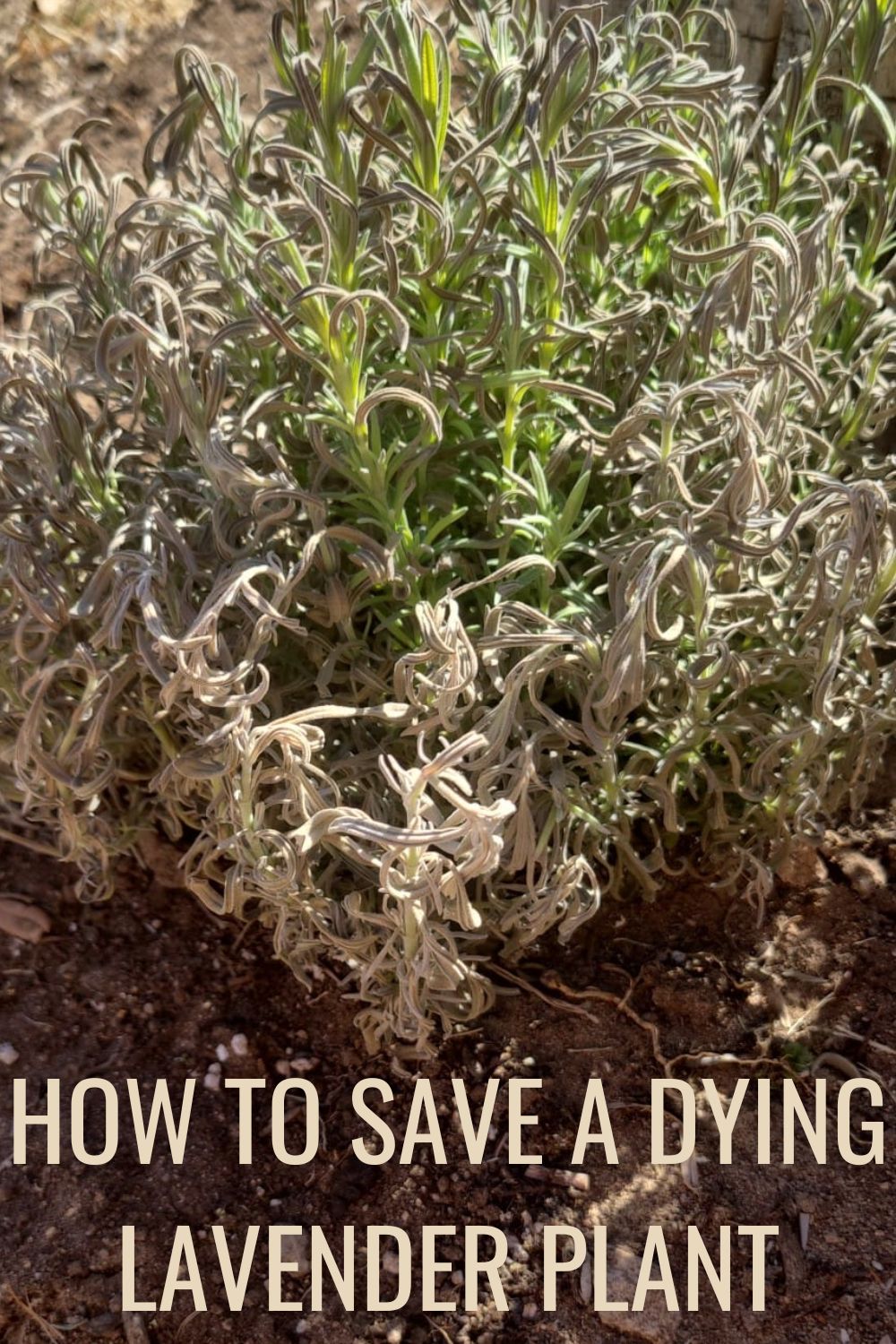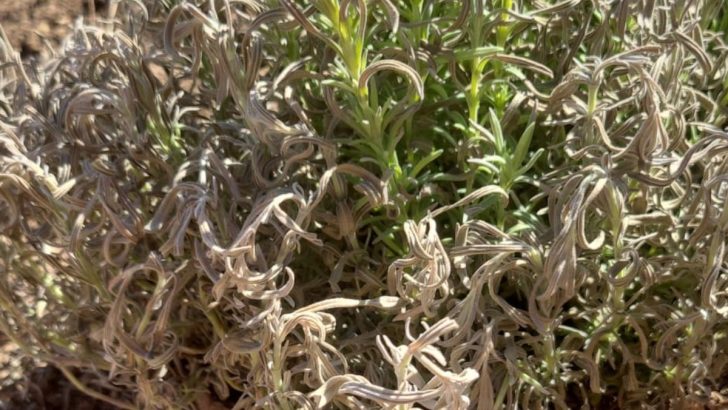Is your lavender plant turning yellow or failing to thrive? Learn how to save a dying lavender plant and restore it to health.
If your lavender plant has seen better days, it’s not over yet! You can do a few things to revive a dying lavender plant before you call it quits.

Although lavender tends to be a low-maintenance plant, it requires specific growing conditions to thrive. If your plant was fine and suddenly started to fade, it may be dealing with some fungal diseases.
Today we’ll look at how to save a dying lavender plant by identifying why it is struggling in the first place. Once you know what’s wrong, you can treat the root cause or understand if it’s time to let this plant go.
Ideal Lavender Growing Conditions
It’s important to remember that lavender is a plant from the Mediterranean region and prefers to grow in environments that replicate its native habitat. Even in a cold climate, you can have beautiful, healthy lavender plants in the right conditions:
- Full sun
- Poor soil with good drainage
- Infrequent watering (once every two weeks)
If your plant is not experiencing these conditions, you will likely notice signs of struggling. The best thing to do is focus on fixing these conditions before trying anything else.
Learn more about growing lavender.
How to Save a Dying Lavender Plant
Before saving your dying lavender plant, you need to understand what’s wrong. Start by looking for the most common reasons, and if those don’t fit your plant’s condition, move on to the less common issues.
1. Adjust your watering schedule
If you’ve been watering your lavender plant more than twice per week, it probably has too much water. Excessive water can lead to other problems like root rot, which will cause your plant’s roots to rot away.
Signs of an overwatered lavender plant include yellow leaves and perpetually wet soil. Give your plant some time to dry out, and if it isn’t too far gone, it should recover.
If you notice your lavender turning brown or drooping, you aren’t watering quite enough. Water your plant 1-2 times per week at first then move on to once every two weeks.
2. Improve soil drainage
If you haven’t been watering that much and still have soggy soil, you need to either improve drainage or change the soil. Lavender does not like to have wet roots, so this is very important.
Lavender plants in a container – Consider adding more drainage holes if possible. Amend your soil by adding pea gravel and working it into the soil. It may be best to change out the soil completely. Use our lavender potting soil mix to get the proper drainage conditions.
Lavender plants in the ground – If you have clay soil, your lavender plant is likely holding on to too much moisture. Try supplementing your beds with pea gravel or vermiculite, and hold off on watering until the ground dries out.
3. Reduce soil quality
This sounds counterintuitive, but lavender plants like poor soil. If you’ve been amending with conventional potting mix or compost, you’re likely adding too much nutrition.
Consider using a sterile planting medium like the propagation mixes used by professional nurseries. You can also make a batch of our potting soil for lavender (linked above) and replant your plants.
4. Decrease soil acidity
Although lavender can grow in acidic soil, it prefers slightly alkaline soils. Consider adding a pinch of pelleted lime to your container. This might be the problem if you notice fewer flowers and little to no growth.
5. More sunlight
Remember that all lavender varieties prefer full sun. Try moving your plant to the sunniest part of your garden.
If you’re growing indoor plants, put them in a bright window or consider supplementing with a grow light during the winter months.
6. Get a bigger pot
Like all plants, your mature lavender plant may have outgrown its small container. Fortunately, this is an easy problem to fix. Choose a larger container, and fill it with a lavender soil mix for the best results. Fluff out the roots a bit before you transplant them.
Your plant may be root-bound if it shows minimal growth and roots are growing out of the drainage holes.
7. Foster new growth
If you have a woody lavender plant, try trimming a few inches of green growth at the top of the branches. Although the woody stems will not produce new growth, a light trim can give the newer sections of the plant a boost in energy.
Learn more about trimming woody lavender plants.
8. Protect from frosts
You can grow lavender in colder areas, but typically as a container plant. Move your plants indoors during the winter to avoid frost and snow.
In more temperate areas, it’s okay to plant your lavender outdoors or keep it outside year-round.
If your plants are not protected from the cold weather, you may notice frost damage like gray leaves or your plant dying from the cold.
9. Tackle fungal infections
There are several lavender pests and diseases and you can usually identify these when your lavender turns different colors.
Lavender turning gray – You may have a fungal infection in the plant’s root system. Trim off dead sections, treat with a fungicide, and replant in fresh soil.
Leaves turning yellow and curling up – This is likely the alfalfa mosaic virus, and insects and infected tools spread it. Sanitize your garden tools and destroy the entire plant to avoid spreading the virus to other plants.
10. Prune twice a year
It’s essential to prune your lavender plants to support healthy root development and remove old growth. Prune in the early spring before flowering and in the late summer or early fall after the summer’s bloom.
Although there are a lot of things that can go wrong with growing lavender, try to keep it simple. Just remember that these are drought-tolerant plants that love the sun and rocky soil. Mimic those conditions, and your plants will reward you with fragrant blooms for many years.

FAQs
Why is my lavender plant dying?
Lavender plants can die from over-watering, over-fertilization, acidic soil, diseases, pests, or proper lack of sunlight.
Can dead lavender come back?
If your lavender plant is truly dead, no. But many times during the cold time of the year your plants might look dead when they are not. Just prune them in the spring to give them a little boost and they should grow beautifully.
How many years does lavender last?
Lavender is a perennial plant and if properly cared for it will last many, many years, up to 20 years or so. Just make sure to plant lavender in a sunny spot, with well draining soil, and prune it twice a year to keep it form getting woody.





Lani
Tuesday 30th of May 2023
I feel terrible. I was looking for a lavender plant and my daughter unknowingly, surprised me with a Spanish lavender plant, (I believe) for Mother’s Day. After a few days, I decided I should get it in my full sun garden…where it promptly died! Living near the shore, we have poor sandy soil. Any thoughts? I want to get another (English lavender) plant, but am hesitant. Thank you
Adriana
Thursday 1st of June 2023
Poor sandy soil and full sun are the perfect environments for lavender. Did you maybe overwater it? If so, it could have root rot.
The Best Fertilizer For Lavender
Sunday 16th of April 2023
[…] How to save a dying lavender plant […]
The Best Mulch For Lavender - 6 Great Options
Sunday 16th of April 2023
[…] How to revive a dying lavender […]
9 Common Lavender Problems And How To Solve Them
Sunday 5th of February 2023
[…] Is your lavender plant dying? Here’s how to rescue a dying lavender plant. […]